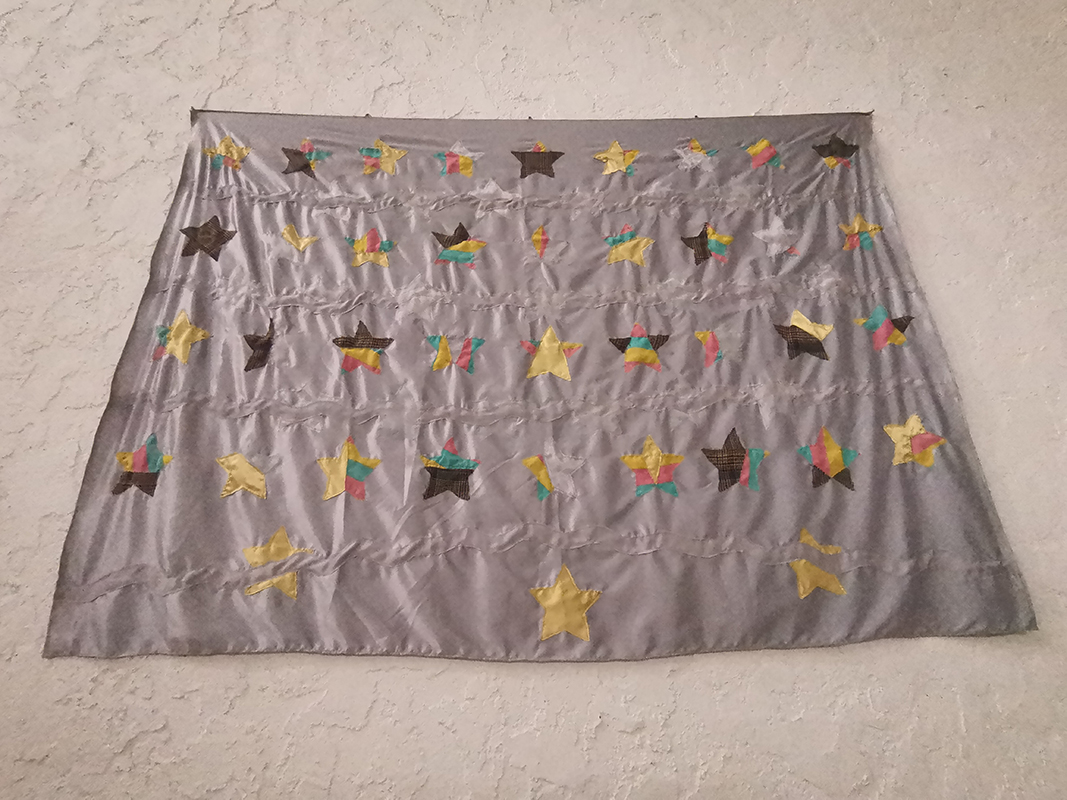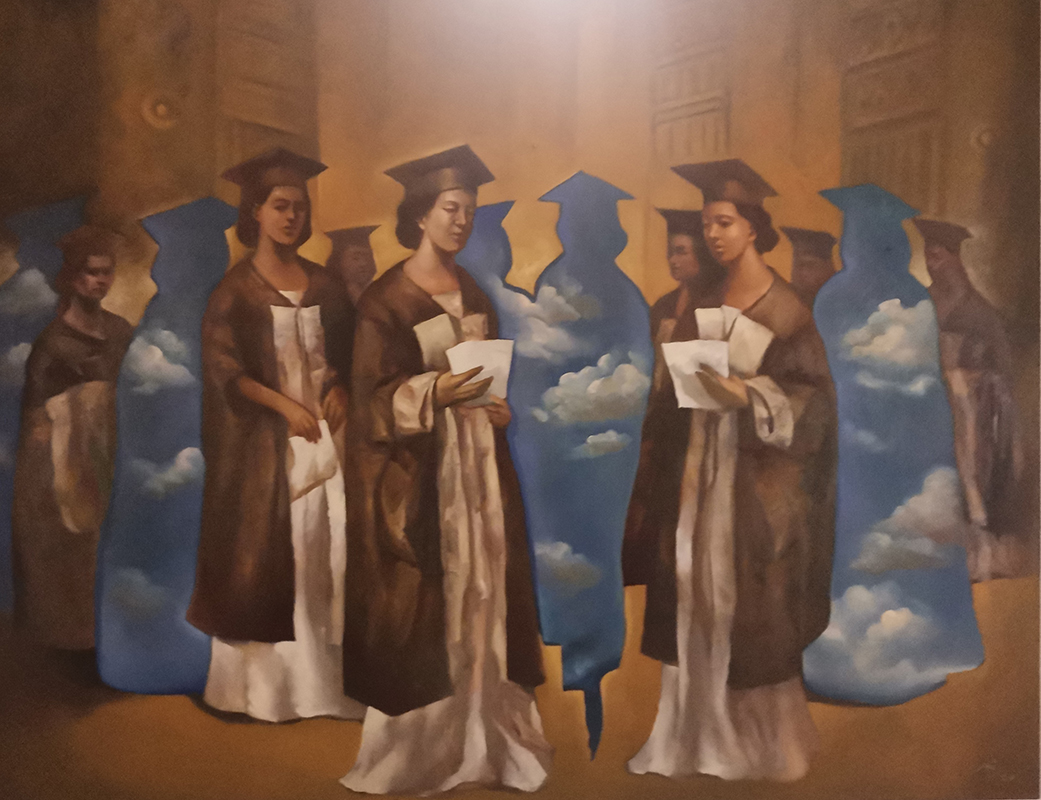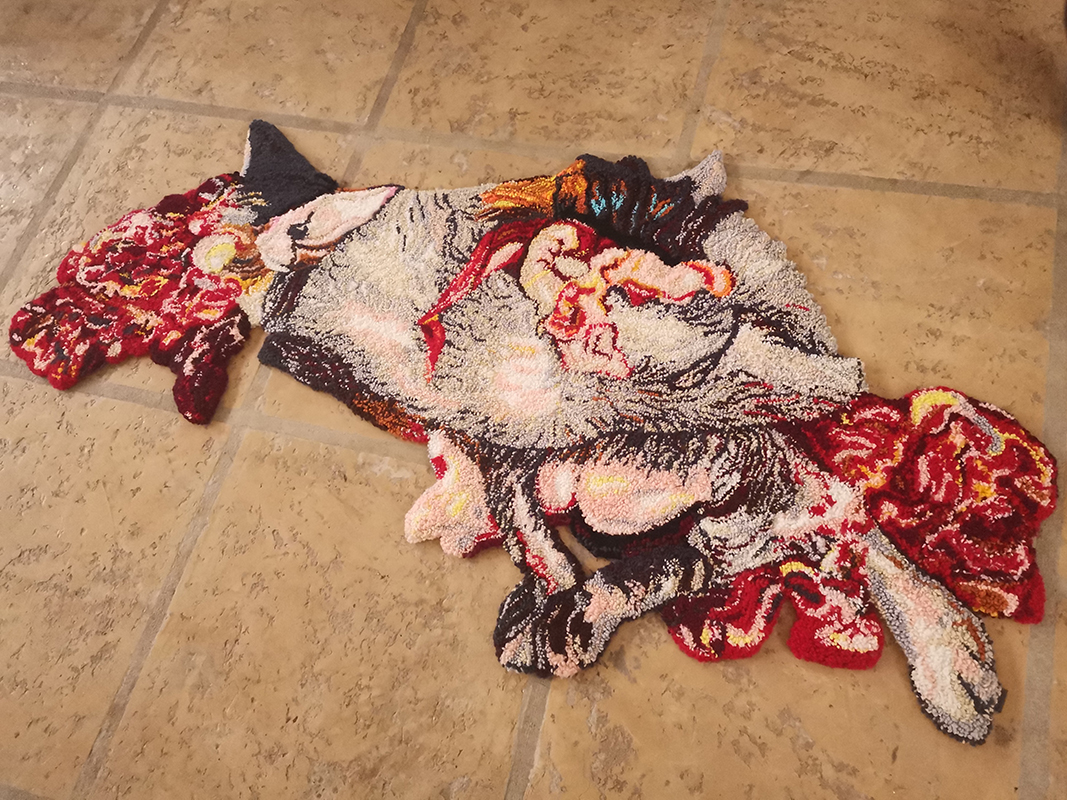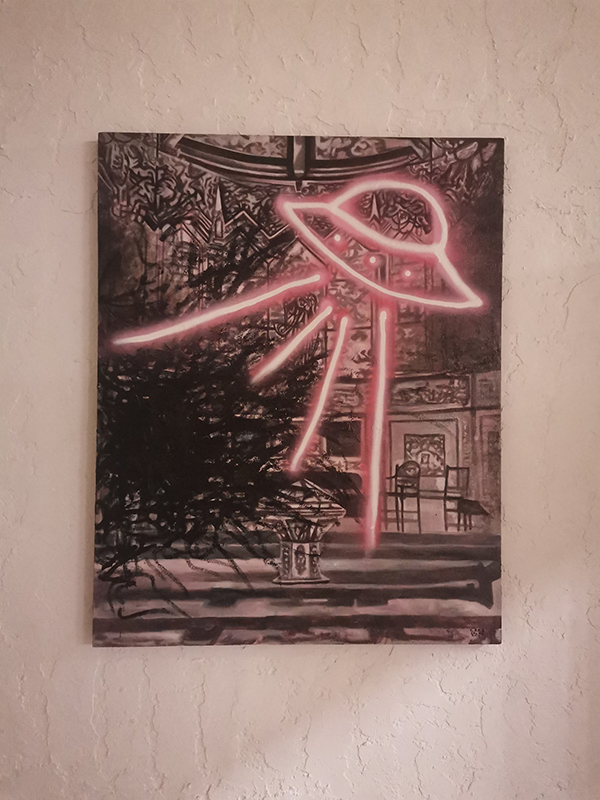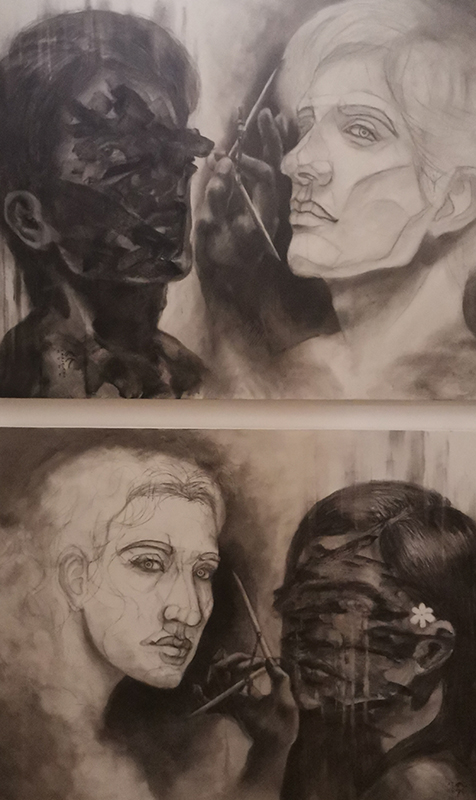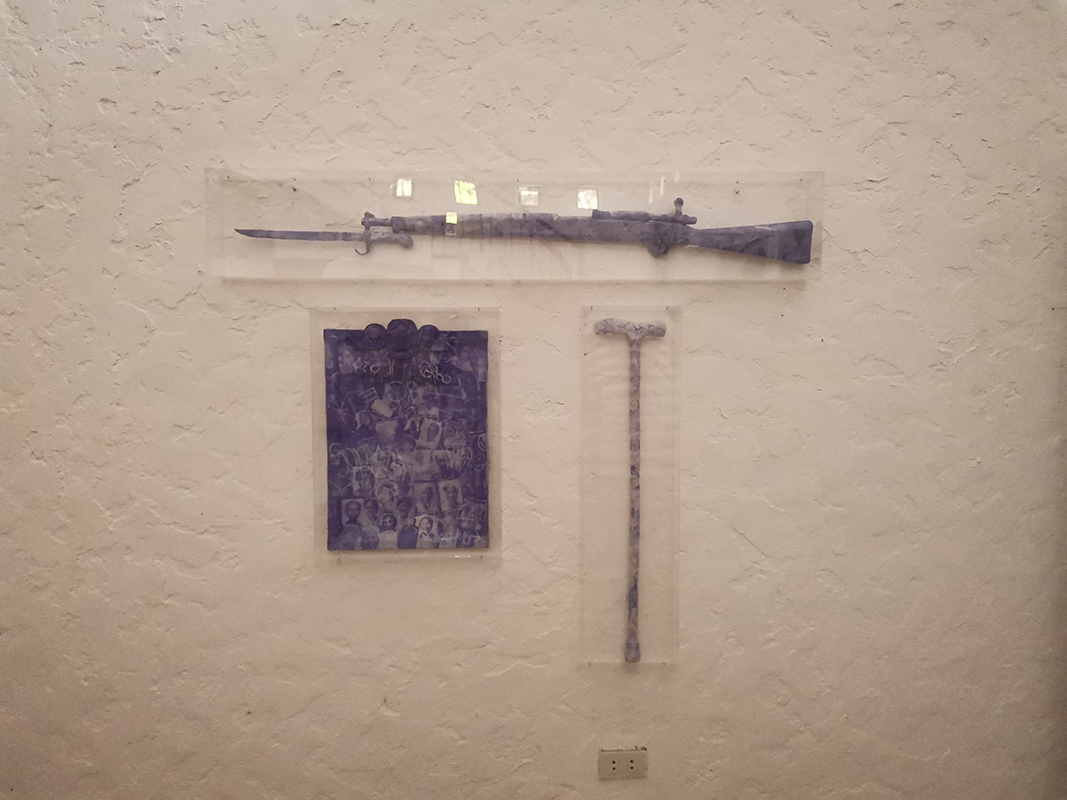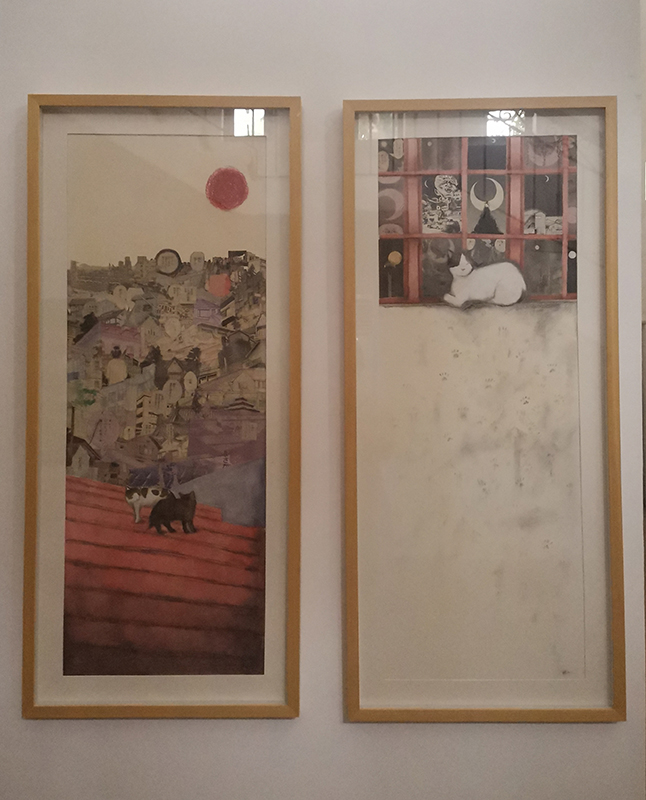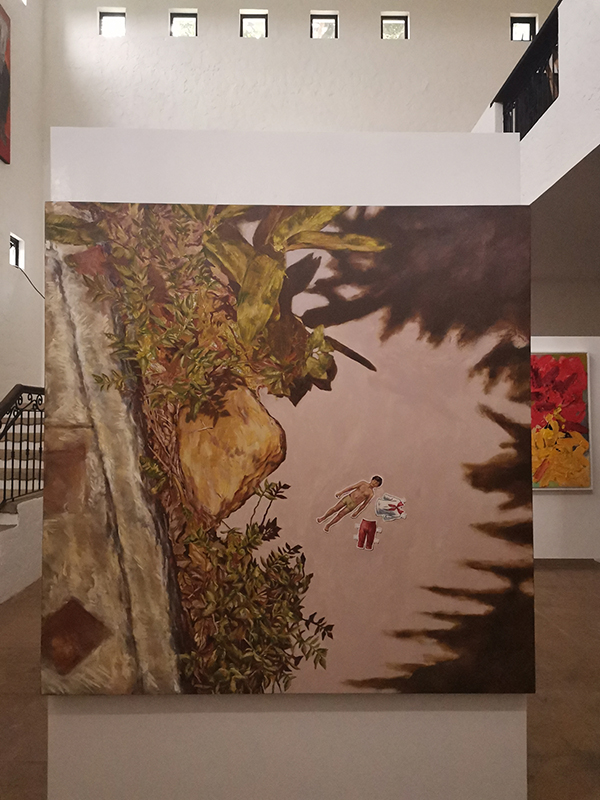“Kasarinlan”, the word, encompasses not just sovereignty, but also the creation and continuance of a national “self”: self-sufficiency, self-government, self-identity. It suggests that independence is a process to be lived out, rather than simply gained in one day. Thirty-three artists, brought together through the Linangan Art Residency, assert, question, and define kasarinlan amidst a global and colonial culture.
Almost a literal symbol of this overlap of powers is Sarah Conanan’s Dark Cloud Blocking Out the Sun, a quilted textile hung over the staircase leading down into the main room. Like a raised flag presiding over the room, Conanan explains that the 58 stars sewn onto the silver banner allude to the 58 stars across the American, Chinese, and Philippine flags. A supposed symbol of sovereignty becomes too crowded when it consists of opposing powers and interests. The artist cites Pura Villanueva Kalaw’s “The Last American Flag on Philippine Soil'' as a jumping-off point: a 1946 account of the loving sewing of an American flag by Filipino women as a “gesture of affection”. It recollects with fondness the “shadow and shelter” of this flag, which, in all its ironies, might still exist today.
Kalaw, in the same text, credits America with the advancement of education for women in the Philippines. Nina Garibay’s painting Glass Ceilings perhaps alludes to this very idea. In the painting, graduates line up in a golden hall like angels in formation. They alternate between corporeal and ethereal. However, glass ceilings, though pretty-sounding and celestial, are barriers that disallow minorities from achieving full, unhindered, potential. It suggests that the education gifted to us was not as transparent a good as it may seem; it allowed us to imbibe their mindsets without allowing us to reach their heights, and that inequality continues to be threaded throughout our history.
That thread continues to background the exhibit - rife with grim motifs and dark colors, and where the oceans are abundant but not serene, and birds herald not an abundance of tropical flora and fauna but death. Joen Sudlon’s graphite drawing of a man posing with his catch on a beach, carrion birds on standby, the sky overcast, brims with ominous silence. The dead fish is encircled by a sash labeled ‘Perlas ng Silangan’, and the title, Bagong Pulo, suggests a newness you cannot trust: is this ‘bagong pulo’ new only through the eyes of a conquistador? Is this new island foreign-made and reclaimed from our seas?
Maricar Tolentino’s inapakan, inaapakan, aapakan is a grislier symbol of these opposing powers. Though abstracted at first glance, the floor-bound textile so exudes the presence of gore from the bright, contrasting reds and flesh tones that it is no surprise once the image of roadkill becomes clear. Created using rug-making techniques, both image and function of the object meld together to assert the label - that which is stepped on, is being stepped on, and will be stepped on continually. It takes on a dire meaning when applied to the context of a nation, apparently insignificant or invisible, eyes diverted from or drawn to the mundane horror.
Identity is also muddied by the foreign as echoed in such works as Carlmel Bernard Belda’s Entablado, a literal image of ‘alienation’ as a UFO bears down on a stage, Honey Maglalang’s Greater than and Less than where colorism is shown to be embedded in our idea of beauty, and Benedict Simbulan’s Umahon, a painting of a paper doll with a traditional Katipunero costume beside him - as if the Filipino identity is merely put on and performed when we are called upon to do so, a shorthand for heritage.
Imported media permeates our popular culture, perhaps as illustrated in Erika Abe’s If I Can Have the Moon and Indiscreet Neighbors, a mixed media collage of images using sheets of Japanese manga arranged in a rooftop scene that is as dense and familiar as any city. It creates dissonance when placed alongside the bloody history of the Japanese occupation, as detailed by Telle de Leon’s series of three wrapped objects. The objects are contrasting but complementary: a bayonet, a memorare, and a walking cane. As if three facets of a narrative, together they articulate a violence done, those it was done to, and the plea to remember - to turn national history and personal recollections into national recollection. At closer inspection, the particulars of the story become clear: in Razed under Darkness, the bayonet is covered with images of Lola Felias’ tapestry, a survivor’s account of the atrocities done to her by Japanese soldiers; in If I could prevent the sun from setting, I would, the memorare is collaged with images of elderly women who were only now able to testify about their experience as comfort women.
The exhibit opened on July 4th, 75 years after the date of our country’s independence from the US. The posture is far from celebratory. It takes a certain mistrust - caution - to examine the state of a nation with more realism. The works are intentional in dissecting and presenting the images and ideas that govern our Kasarinlan.
Kasarinlan ran from July 4 to August 4, 2021 at the Linangan Art Residency, Antipolo. To learn more about their events, visit their Instagram. Click here to view the full e-catalogue.
Shireen Co is an artist, experimental cook (of leftovers), and a mid-range chess nerd. Click here to buy her a coffee.

